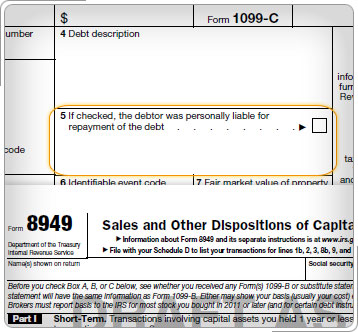Recourse vs. Nonrecourse DebtThere are two types of debts: recourse and nonrecourse. A recourse debt holds the borrower personally liable. All other debt is considered nonrecourse. In general, recourse debt (loans) allows lenders to collect what is owed for the debt even after they've taken collateral (home, credit cards). Lenders have the right to garnish wages or levy accounts in order to collect what is owed. A nonrecourse debt (loan) does not allow the lender to pursue anything other than the collateral. For example, if a borrower defaults on a nonrecourse home loan, the bank can only foreclose on the home. The bank generally cannot take further legal action to collect the money owed on the debt. Whether a debt is recourse or nonrecourse may vary from state to state, depending on state law. If a lender cancels a debt and issues Form 1099-C, the lender will indicate on the form if the borrower was personally liable (recourse) for repayment of the debt. The tax impact depends on the type of debt - recourse or nonrecourse.
If property securing the debt was foreclosed on or abandoned, the taxpayer may need to report the disposition (sale) on Form 8949, Sales and Other Dispositions of Capital Assets, and Schedule D, Capital Gains and Losses. This is covered in detail in this course. Generally, if taxpayers abandon property that secures debt for which they are personally liable, they do not have a gain or loss until the foreclosure is completed. If taxpayers abandon property that secures debt for which they are not personally liable, the abandonment is treated as a sale or exchange. For more information on abandonments, see Publication 4681. 
|
Cancellation of Debt—Basics
Form 1099-C
Form 8949
Schedule D